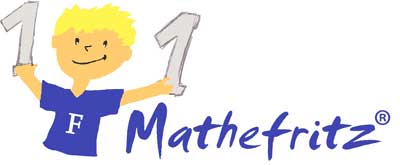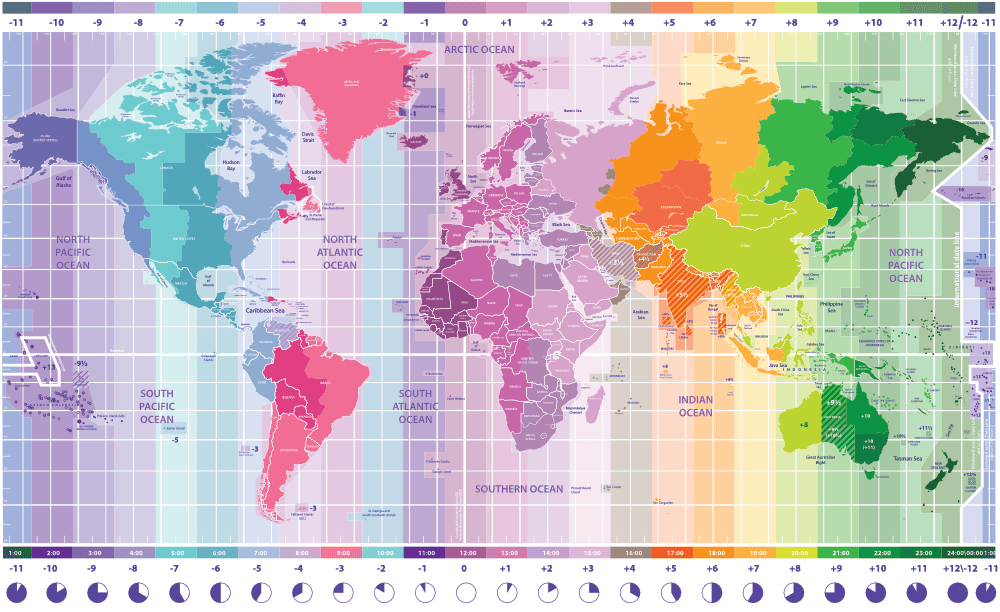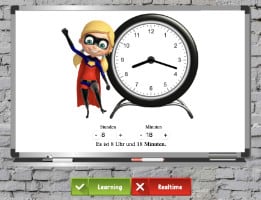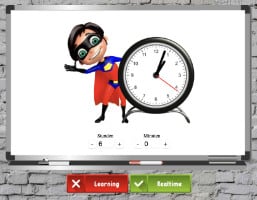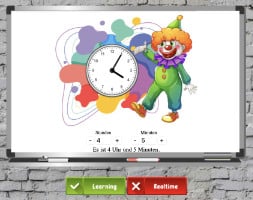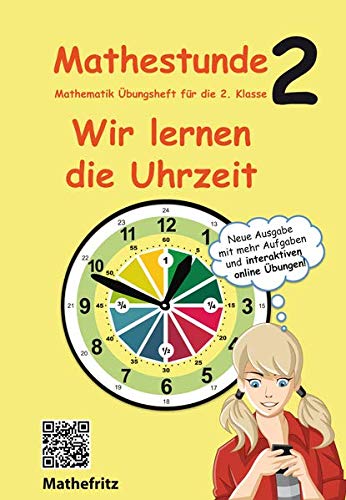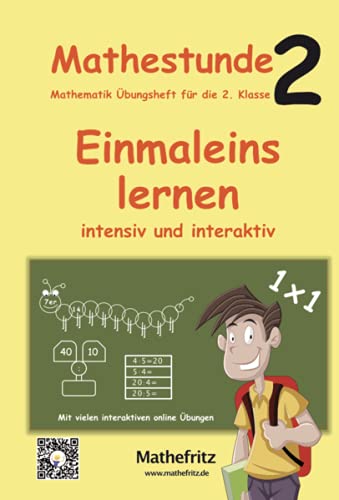Learn to tell the time
Tips, online exercises
and free learning apps
for your success
Learn to tell the time: Find out how you can learn to read the clock quickly and effectively. Practical tips, online exercises, games and the “Telling the time” exercise book will help you to understand the time effortlessly
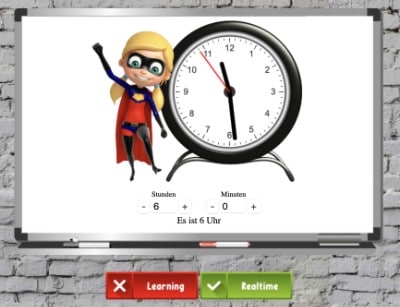
The interactive clock now also has a real-time mode. In real time mode, the current time of your surroundings is displayed.
Learning to rtell the time: Why is it important?
Learning to tell the time and understanding time are essential skills that children have to learn in the course of their lives. Mastering these skills not only helps to structure everyday life, but also promotes cognitive development and an understanding of time concepts.
Learning to tell the time enables children to develop a basic understanding of how time is structured. By reading the clock, you learn how time is divided into hours, minutes and seconds, and you can better organize events in your daily routine. This promotes the ability to organize yourself and helps you and other children to take responsibility for your time.
Basic concepts of Mathefritz
Learn to tell the time
When telling the time, there are several basic concepts that are important to understand. We cover all of these topics in our exercise book on clock time! These concepts include:
1. clock face and hands: Children need to understand that a clock has a clock face and hands. The dial is divided into 12 hours (1 to 12) and has two hands: the hour hand and the minute hand.
2. hours and minutes: Children need to understand that time is displayed in hours and minutes. The hour hand indicates the hours, while the minute hand indicates the minutes.
3. hour hand: The hour hand is the shorter hand on the dial and indicates the hours. It moves slower than the minute hand and makes one complete revolution in 12 hours.
4. minute hand:The minute hand is the longer hand on the dial and indicates the minutes. It moves faster than the hour hand and makes one complete revolution in 60 minutes.
5. hour markers: The dial is divided into hour markers indicating the hours from 1 to 12. The hour markings are important for reading off the hours.
6. half hours and quarter hours:
Children need to understand how to tell the time in half and quarter hours. For example, the hour hand points to the 6 at half past one (or 1:30), while the minute hand points to the 6 or 30 minute position.
7. minute markers: Between the hour markers there are often smaller minute markers that indicate the individual minutes. These markings help you to read off the exact number of minutes.
8 AM and PM: Children should also understand that in many regions of the world the time is shown in AM (ante meridiem) and PM (post meridiem) to distinguish between morning and afternoon.
Through practical exercises and worksheets, Mathefritz will help you to better understand these concepts and become confident in telling the time.
The interactive clock from Mathefritz
learn around the clock
| Hours | minutes |
Analog watch vs. digital watch:
Which is easier to read?
The question of whether analog or digital watches are easier to read depends on various factors.
Analog watches:
– Advantages: Analog watches show the time on a dial with hands, which some people find more intuitive. They can help to better understand the concept of time and the relationship between hours and minutes.
– Disadvantages: Reading the time on an analog watch requires a certain ability to interpret the hand positions. Reading off minutes in particular can be a challenge for some children.
Digital watches:
– Advantages: Digital clocks show the time in numbers, which can be easier for many children to understand. The time is displayed clearly and immediately, without the need to interpret hands.
– Disadvantages: Some argue that children who only use digital watches may have difficulty understanding the concept of time on an analog watch face. You may have difficulty distinguishing between AM and PM or understanding the exact relationship between hours and minutes.
Procedure for learning to tell the time:
1. basics first: Children should first learn the basic concepts of telling time, regardless of whether they use an analog or digital watch. This includes distinguishing between hours and minutes, understanding AM and PM and reading half and quarter hours.
2. practical exercises: It is important that children do practical exercises in telling the time, both with analog and digital clocks. This helps them to understand different representations of time and to familiarize themselves with both types of clocks.
3. take individual preferences into account: Children have different learning styles and preferences. Some will be more comfortable with analog watches, while others prefer digital watches. That’s why you can do your best and most suitable exercises online here with us.
Learn to read the clock with the online clock
Analog clock or digital clock – here is both!
Learn about world time and time zones!
Learn to read the time with the analog clock or with the digital clock. Just a small click on the wristband and the time changes to a different format.
This online clock shows you the current time in the UTC + 2 time zone. You can find out what this is all about on our online time page.
Step-by-step instructions
for children to learn to tell the time
Here is a short step-by-step guide to telling the time for children:
1. identify the hour hand: Start by identifying the hour hand on the watch. It is the shorter of the two hands and points to the hour.
2. identify the minute hand: Look for the longer hand on the clock, this is the minute hand. He points to the minutes.
3. read the hours: Look at the hour hand and see what number it points to. This is the hour.
4. read off the minutes: Now look at the minute hand. Note that the minute hand moves faster than the hour hand. The minutes are usually displayed in increments of five.
5. read off the exact minutes: To read off the exact minute, count the minutes, first in steps of five and then the remaining minutes.
These are exactly the steps we follow on this page and in our exercise book to learn the time. Try it out!
Do you already know …
… more opportunities to practise learning the time or to continue practising for elementary school?
We learn the time
The exercise book for elementary school. Learn the time with the exercise book.
Available everywhere in stores (e.g. online at amazon.de) or simply as a PDF download as part of the online access from our material page www.mathestunde.com/ or in the store as a single download.
Learning multiplication tables
Our exercise book for the 2nd grade of elementary school. Learn the multiplication tables series, comprehensive and with suitable interactive exercises!
Available everywhere in stores (e.g. online at amazon.de) or as a download as part of the online access from www.mathestunde.com or as a single download.
